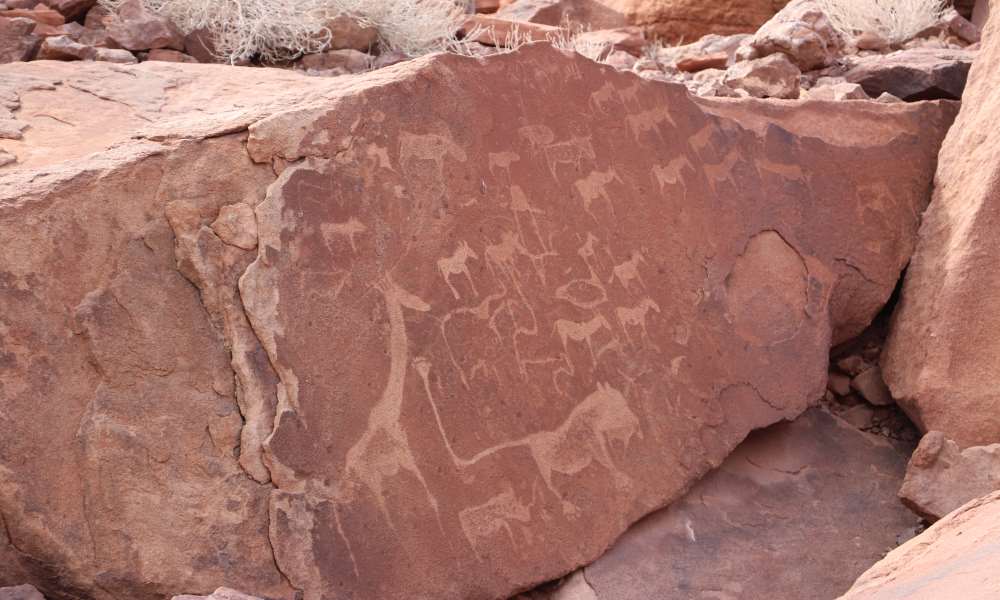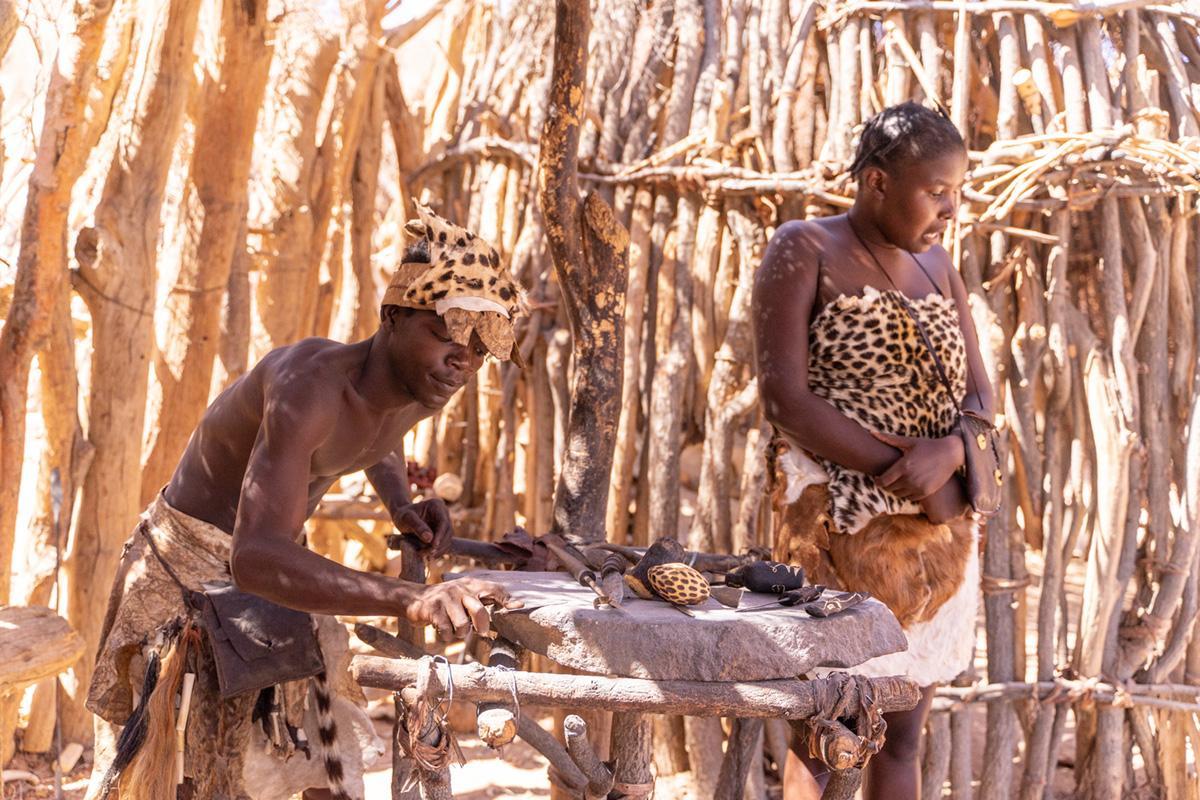Experience Damaraland at its finest
Discover Damaraland to experience a blend of untamed wilderness, breathtaking scenery, majestic mountains, ancient rock art, off-the-beaten-track adventure and thrilling wildlife sightings.
Damaraland is the ideal destination for travellers seeking a unique and authentic experience, and travelling between Sesfontein and Khorixas is the ideal route to visit these attractions.
Twyfelfontein
The Twyfelfontein area is famous thanks to its many rock paintings and engravings created by the San, of which some 2 500 have already been counted. Speculation about the age of these engravings vary between 1 000 and 10 000 years.
What makes these etchings remarkable is that they were made without the use of metal tools; it is presumed that quartz was used instead.
The motifs include hunting scenes, in which the hunters are pictured with a bow and arrow, as well as myriad animals. There is also an engraving of a seal, which is impressive since the ocean is about 100 km away.
In 2007, the United Nations Educational, Scientific and Cultural Organisation (UNESCO) declared Twyfelfontein a World Heritage Site.
Damara Living Museum
The Living Museum of the Damara close to Twyfelfontein is the first traditional Damara project in Namibia and the only one of its kind. It is situated some 10 km north of the Twyfelfontein rock engravings site.
Organ Pipes
The so-called Organ Pipes are situated near the small inselberg of the Burnt Mountain, west of Khorixas. They are part of a rock formation that comprises a group of columnar basalts which resemble organ pipes.
The Organ Pipes were formed about 150 million years ago as the result of the intrusion of liquid lava into a slate rock formation, which was exposed over time by erosion. The formations seen here are the remains of molten rock pushing up through the Earth’s surfact. The similarity between these vertical basalt slabs and organ pipes is clear.
The Petrified Forest
The Petrified Forest has a history that stretches back more than 280 million years, making it a fascinating stop for tourists on the route between Twyfelfontein and Khorixas.
It is located about 50 km west of Khorixas and exists in an old river channel that is described as “an occurrence of fossilised trees”. It was proclaimed a national monument in 1950.
Here visitors can see the remains of trees that were washed to the site by massive floods approximately 280 million years ago. The trees were uprooted millions of years ago and swept along by rivers in flood, covered by sediment and subsequently uncovered by erosion. However, this sand and mud covered the trees to such an extent that air intrusion was prevented and consequently no decay took place and the organic material of the trunks was conserved.
In this area one can also find living specimens of the Welwitschia mirabilis.
Damaraland is the ideal destination for travellers seeking a unique and authentic experience, and travelling between Sesfontein and Khorixas is the ideal route to visit these attractions.
Twyfelfontein
The Twyfelfontein area is famous thanks to its many rock paintings and engravings created by the San, of which some 2 500 have already been counted. Speculation about the age of these engravings vary between 1 000 and 10 000 years.
What makes these etchings remarkable is that they were made without the use of metal tools; it is presumed that quartz was used instead.
The motifs include hunting scenes, in which the hunters are pictured with a bow and arrow, as well as myriad animals. There is also an engraving of a seal, which is impressive since the ocean is about 100 km away.
In 2007, the United Nations Educational, Scientific and Cultural Organisation (UNESCO) declared Twyfelfontein a World Heritage Site.
Damara Living Museum
The Living Museum of the Damara close to Twyfelfontein is the first traditional Damara project in Namibia and the only one of its kind. It is situated some 10 km north of the Twyfelfontein rock engravings site.
Organ Pipes
The so-called Organ Pipes are situated near the small inselberg of the Burnt Mountain, west of Khorixas. They are part of a rock formation that comprises a group of columnar basalts which resemble organ pipes.
The Organ Pipes were formed about 150 million years ago as the result of the intrusion of liquid lava into a slate rock formation, which was exposed over time by erosion. The formations seen here are the remains of molten rock pushing up through the Earth’s surfact. The similarity between these vertical basalt slabs and organ pipes is clear.
The Petrified Forest
The Petrified Forest has a history that stretches back more than 280 million years, making it a fascinating stop for tourists on the route between Twyfelfontein and Khorixas.
It is located about 50 km west of Khorixas and exists in an old river channel that is described as “an occurrence of fossilised trees”. It was proclaimed a national monument in 1950.
Here visitors can see the remains of trees that were washed to the site by massive floods approximately 280 million years ago. The trees were uprooted millions of years ago and swept along by rivers in flood, covered by sediment and subsequently uncovered by erosion. However, this sand and mud covered the trees to such an extent that air intrusion was prevented and consequently no decay took place and the organic material of the trunks was conserved.
In this area one can also find living specimens of the Welwitschia mirabilis.









Comments
Namibian Sun
No comments have been left on this article